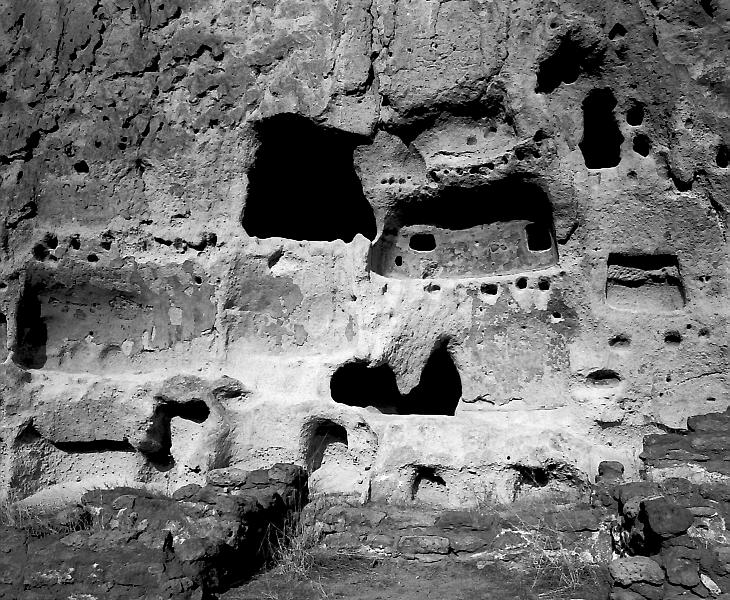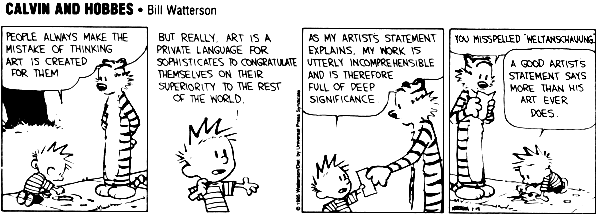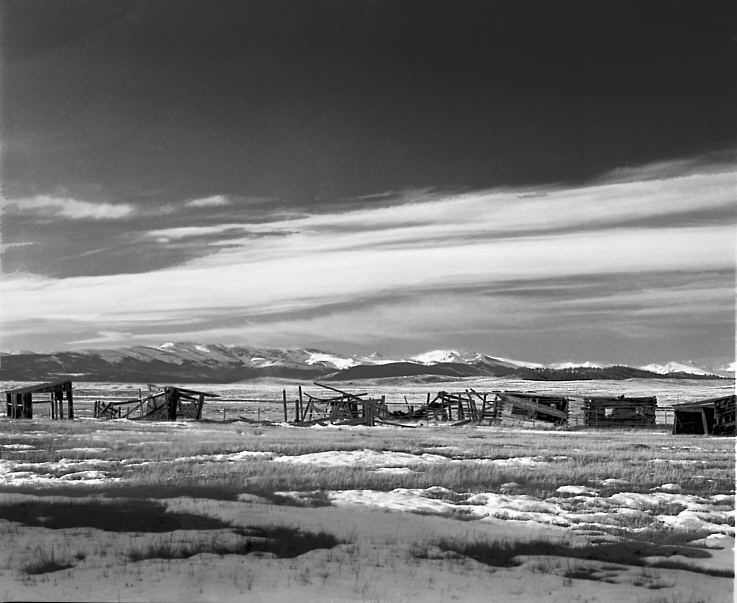Artist's Statement
The beauty of
things -
Is in the beholder's brain - the human mind's translation
of their transhuman
Intrinsic value.
...as mathematics, a human invention
That parallels but never touches reality, gives the
astronomer
Metaphors through which he may comprehend
The powers and the flow of things: so the human sense
Of beauty is our metaphor of their excellence, their
divine
nature: - like dust in a whirlwind, making
The wild wind visible.
-Robinson Jeffers
|
 |
To write informatively about art is inherently difficult. When
the work under consideration is one's own, the challenge is
compounded. Robert Adams, in Why People Photograph,
nicely summarized the problem of mixing words and photographs: if
the words are stronger than the images, then the images are a
failure; if the words are weaker than the images, then the words
were unnecessary. Many artists simply refuse to discuss their own
work, and I believe their reticence is worthy of respect. It is
said that a student once approached Robert Frost and asked him to
"explain" one of his famous poems. Frost replied,
"Do you want me to say it worse?"
The cartoon presents a completely different, and certainly
more contemporary, viewpoint. There is truth lurking behind its
blunt cynicism,  as a visit to one's local
art museum is likely to confirm. We live in an exhibitionist age,
and for every Robert Frost there is a Calvin only too eager to
talk about himself. The results are often pretentious, sometimes
funny, and rarely illuminating.
as a visit to one's local
art museum is likely to confirm. We live in an exhibitionist age,
and for every Robert Frost there is a Calvin only too eager to
talk about himself. The results are often pretentious, sometimes
funny, and rarely illuminating.
In spite of this, I am unwilling to dismiss the power of
the written word to convey important ideas about art. There are
artists and critics who write persuasively, and without their
efforts our appreciation of art would be much impoverished. On
this thought I plunge ahead hopefully with my own statement.
Photography as fine art
There are many reasons to take a photograph, among them being
the intention to create a meaningful work of art. Why can the
making of a photograph, a commonplace event in the modern world,
become artistic expression? On a primitive level a photograph is
nothing but a data record: in traditional photography a pattern
of silver grains, in digital photography a set of numbers. The
result is mathematically related to the pattern of light that
entered the front end of the camera at a particular time and
place. In this sense a photograph differs from a painting or a
musical composition, which must be synthesized in its entirety
out of the human imagination. Each note of a Beethoven quartet
was put in place by the composer's creative intelligence, whereas
in a photograph it seems as though much of the hard work is being
done by lenses and electrical circuits.
Nevertheless a photograph is the conscious result of a certain
number of decisions made by the photographer. One of my teachers
has said that a photographer must decide "where to stand and
where to put the edges of the frame. " To this can be added the
choice of camera settings, the editing of the image on the computer, the
selection of images to be presented, and even the order in which to arrange them
for viewing. Given the complexity of the world and the
infinite number of possible photographs that can be taken, the
photographer's creative palette is no less rich than the
painter's or composer's.
" To this can be added the
choice of camera settings, the editing of the image on the computer, the
selection of images to be presented, and even the order in which to arrange them
for viewing. Given the complexity of the world and the
infinite number of possible photographs that can be taken, the
photographer's creative palette is no less rich than the
painter's or composer's.
In the specific case of landscape photography, it is
appropriate to ask another question: why do we sometimes say that
a particular place is beautiful? A mountain, after all, is a
random act of nature; it is neither inherently beautiful or ugly
but simply is. The answer to this apparent dilemma is to
be found, I think, in the Robinson Jeffers poem at the top of
this page. A certain mountain is said to be beautiful because it
appeals to "our human sense of beauty." That
sense, says Jeffers, provides us with a metaphor of the
mountain's excellence. It is not the mountain that possesses
beauty but its metaphor, which exists only within the human mind.
What the landscape photographer seeks is this same kind of
metaphor. The creative photograph is not a scientific record of a
mountain, but an abstraction intended to serve as a metaphor for
its beauty. When the photographer is successful his metaphor will
be both compelling and new. Such a photograph delivers to its
viewer what mathematics delivers to Jeffers' astronomer:
comprehension of "the powers and the flow of things."
My personal photographic approach
Most of my work in photography can be described as
"landscape." Where people and manmade objects appear it
is primarily as compositional elements. I favor this branch of
photography not because I consider it to be better or more
important than other branches, but because I find it to be more
personally satisfying. The main reason for this, I am sure, is
that I enjoy visiting places where the landscape is inherently
interesting. The urge to photograph them follows naturally.
I take a resolutely literal approach to photography, avoiding
any extensive retouching or modifying of the image. By
restricting my technique in this way, I can simplify my thinking
in the field. This seems to work best for me. On the other hand,
I try not to be dogmatic: I will indulge in minor retouching to
remove a scenic wart from an otherwise good photograph. On every
photograph I use standard image enhancement techniques such as
contrast enhancement, color correction and enhancement, dodging, burning, and sharpening. My goal is always, in Ansel
Adams' elegant phrase, "to remain faithful to the image
formed by the lens."
Paul Cornelius
Original: September, 1997
Revision: October, 2000
Revision: February, 2025
Home

 as a visit to one's local
art museum is likely to confirm. We live in an exhibitionist age,
and for every Robert Frost there is a Calvin only too eager to
talk about himself. The results are often pretentious, sometimes
funny, and rarely illuminating.
as a visit to one's local
art museum is likely to confirm. We live in an exhibitionist age,
and for every Robert Frost there is a Calvin only too eager to
talk about himself. The results are often pretentious, sometimes
funny, and rarely illuminating.
